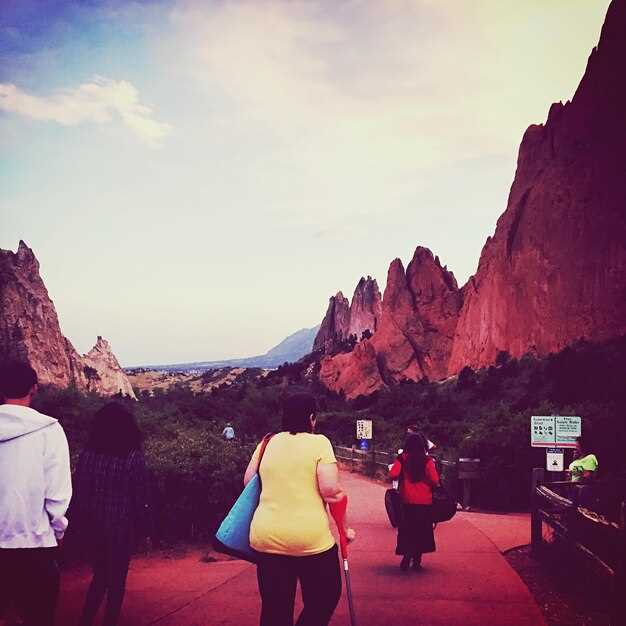
Start with a practical pick: book a benagil sea cave tour along the Algarve coast for your first day trip. A standard option lasts 1.5–2 hours on the water, with morning departures around 9:00–11:00 that tend to have calmer seas and better light for photos. Many operators offer a quick stop in nearby villages for coffee or a few snacks, so you can glimpse daily life from the water’s edge.
Choose a balanced, flexible plan that combines caves, coastlines, and a lighthouse silhouette along rugged cliffs. If conditions turn rough, accommodating operators will adjust the route or switch to a sheltered section, helping you stay comfortable while still making the most of the coast. You’ll be able to decide between a boat, a kayak, or a stand‑up paddle option, depending on your level of fitness and what you love in a day tour.
For a full coastal immersion, join tours that explore rare habitat along the shoreline and stop at small lighthouse sites and hidden coves. You can watch seabirds from a rock ledge, listen to guides explain the habitat, and learn about sustainable tourism that respects local communities, choosing experiences you like. Bring sunscreen, water, and light snacks, and dress in layers so you stay comfortable as the sea conditions change.
Study tour options by region to find the best fit: in portugal, the benagil caves pair with coastal villages and a quick drive to a lighthouse; in italy’s Amalfi coast, you’ll enjoy cliff paths and boat trips; in thailand, island-hopping day trips reveal coral habitats and fishing villages. Look for operators that publish weather windows, safety briefing, and flexible cancellation terms so you can adjust plans if conditions shift.
When you plan, focus on a single day that offers a balanced mix of scenery and culture, and consider a backup option in case the wind picks up. If you love architecture, add a quick stop at a coastal lighthouse or a historic harbor; if you prefer nature, prioritize coves and rare wildlife sightings. To start, join a reputable operator that communicates clearly, provides snacks or water, and accommodates dietary needs.
Plan Global Day Tours: Quick, Actionable Steps to Book and Customize
Book a 6- to 8-hour Algarve coast day tour with an English-speaking guide that can tailor the route to your interests, focusing on the Bordeira dunes, Albufeira coastline, and nearby cities. A private or small-group option lets you adjust dates and the plan on the fly, ensuring you discover what you want without waiting for a fixed itinerary.
Decide what you want to discover first. If you love dramatic coastal scenery, target the Bordeira dunes and crested cliffs; if you crave water views, pick stops along Albufeira’s shoreline and the lagoons nearby. If curious about culture, include a quick stroll through a nearby old town or a traditional market. This helps you choose a route that stays surrounded by fascinating landscapes while keeping the pace comfortable for beginners and active travelers alike.
Choose a supplier with clear inclusions and flexible scheduling. Look for an English-speaking guide, hotel pickup in Albufeira or surrounding areas, and a menu of options that allow changes to the route. Verify what’s included: transportation, entrance fees, and a safety buffer for weather swings or last‑minute changes to the plan.
Customize the day with practical steps. Decide on a start time that aligns with light for photography and walking on sandy dunes; early starts avoid heat and crowds. If you want more time on the shore, ask for longer beach stops and a water break at a shaded place. If you’re curious about wildlife, request a brief stop for birdwatching near dunes where a buzzard or other coastal birds are often seen.
Confirm the booking with a detailed itinerary and a single contact for changes. Share special requests (dietary needs, accessibility, or a preferred pace) and confirm meeting point, pick-up time, and the estimated end time. A clear plan reduces confusion and makes it easier to adjust on your own if you want to switch a stop from a beach to a museum in the same day.
| Option | Length | Κύρια σημεία | Best For |
|---|---|---|---|
| Private Custom Day | 6–8 hours | Bordeira dunes, Albufeira coast, water views, nearby cities | Beginners, couples, flexible schedules |
| Small-Group Coastal Walk | 5–7 hours | Walking along cliff paths, crested rock formations, photo stops | Active travelers who want social vibes |
| City & Coast Combo | 7 hours | Historic town stroll, dunes, seaside lookout, lunch by the water | First-timers exploring multiple highlights |
How to align day tours with your birding and nature interests
Choose a local full-day tour that blends expert guiding with relaxed transport and easy pacing. Look for an itinerary that runs approximately 6–7 hours and keeps you near habitats where birds are most visible, such as wetlands, estuaries, salt marshes, and coastal cliffs.
Know your target birds and habitats: kestrels hovering over fields, ducks and waders along tidal flats, and abundant prey that drives feeding flocks. A tour that blends estuary watches with cliff sides and caves will deliver a richer experience for lovers of nature. If you’re a photographer or casual observer, ask about stops where you can study perched birds and low-flying raptors without crowds hanging around the best perches.
If you travel in Portugal, search for options near Portimão or Praia da Pêra and check how the route connects with local farms, salt pans, and vale scenery. This mix keeps the day authentic and makes it easy to extend with a seaside lunch or a quick dip along the coast.
Ask about transfers: some operators rely heavily on vehicles; if you prefer more time in the field, seek routes with fewer drive legs and more on-foot observation–less driving, more stops for long looks at roosts, feeding flocks, and perched birds.
Pack binoculars, a field guide, a hat, sunscreen, and water. A compact notebook helps you log locations and memorable sightings. Request an information sheet in advance listing common species for the season, local hotspots, safety tips around caves and rocky coastlines, and timing for low tide windows where fish and prey concentrate near shore.
Look for options that connect with local conservation efforts and regional foods. Some routes blend birding with visits to rivers where fish are plentiful, or salt works that attract birds and offer easy access for beginners. The interplay of salt, reed beds, and abundant birds makes a day in Portimão and nearby areas especially rewarding for krazy keen observers and casual lovers alike, with chances to see kestrels, ducks, and other species in action while enjoying the vale landscape, worth adding to your birding plans.
How to pick duration and route: half-day, full-day, or multi-stop
Half-day is the smart starting point for most travelers. It fits 3–4 hours of exploration, allows a swim at nearby beaches, and keeps energy steady for the rest of the day. If your plan centers on a single highlight–such as a stroll along dykes, a visit near piedade, or a coastal lookout–this window preserves focus and pace.
Full-day (about 6–9 hours) suits explorers who want to sample multiple sites without rushing. Build in a core route plus one or two extras, like a harbor walk or a park for dragonflies in season, and a relaxed lunch. For portuguese-speaking groups, a guide who speaks Portuguese adds context without language gaps.
Multi-stop itineraries (2–4 stops) maximize exploration opportunities. Start with a beach segment, then move to a wetlands overlook, and finish at a historic site or market. Allow transit time and adjust for daylight. In march, bird activity is high; you may spot buzzard overhead, larks in the grass, and dragonflies near water.
Before booking, review inclusions and cancellation terms. Inclusions usually cover transport, guide, and entry fees; meals or gear can be added. If something’s missing, adjust the route or choose a different operator. Cancellation terms vary; choose a plan that allows rescheduling without penalties up to 24 hours before departure, which reduces risk if weather shifts.
Finally, tailor by your priorities: if you value on-site exploration and wildlife watching, a half-day might miss some, so pick full-day or multi-stop. Use a route that balances notable landmarks with time for photos and spontaneous discoveries. In march or other seasons when dragonflies and larks are active, build a route that maximizes outdoor time and opportunities here.
What to compare among operators: inclusions, group size, and cancellation policies

Compare inclusions first, then group size, then cancellation policy to lock in value and a smoother day. Look for a clear inclusions list: transport, entry fees, meals, and a qualified guide. If they include extras like hotel pickup or a museum pass, that reduces costs and keeps the day from becoming a surprise. Rarely do well-structured tours leave you guessing what you’ll receive, so choose operators who provide a concise, itemized commentary about what you’ll receive and what you’ll leave behind.
Group size matters: prefer small, personalized groups around 6-12 people; they’re suitable for those who want a closer look at the wonders and to get quick answers from the guide. In the algarve areas, many tours feature a ringed coastline and a fortress as highlights; a smaller group makes it easier to reach vantage points and to enjoy breathtaking moments, marvel at the coastal vistas, including the algarves coastline.
Cancellation policies vary; seek options that offer free cancellation or flexible rebooking up to 24-48 hours before departure, because conditions like weather or wetland visibility can change quickly. If the tour visits near pêra or other algarve towns, confirm whether travel to and from sites is included or charged separately; a transparent policy prevents delays and keeps you relaxed.
By comparing these factors across several operators, you’ll find various options that fit different interests: abundant field experiences, rare moments, and those unforgettable breather breaks. Choose one that offers a personalized itinerary around the most breathtaking wonders and leave with a rewarded sense of achievement.
When to visit for seasonal birding and wildlife activity

Visit in April and October for peak migratory activity and reliable wildlife sightings.
Mornings offer the clearest light and the calmest conditions, with the first hours after sunrise delivering the best chances to spot harrier across coastal edges and to see wading birds feed on mudflats and in lagoons. In Seville’s wetlands, plan a dawn start in April to catch a mix of shorebirds and reedbed species along the Guadalquivir estuary. In Lagos, coastal lagoons attract abundant shorebirds through the dry season; early sessions yield higher counts before boats and fishing traffic ramp up.
Here are region-flavored windows to consider, plus practical tips to maximize your experience:
- Seville, Spain – Guadalquivir wetlands: target April for broad species variety, including avocets, stilts, and several raptors near reedbeds. Starting before sunrise helps you beat the crowds.
- Lagos, Nigeria – coastal lagoons: February–April and September–November deliver strong migratory and resident counts; arrange a short boat option to access mudflats at optimal tides.
- Greek coast and delta habitats – Greek wetlands: March–May and September–November show steady harrier movement and diverse shorebirds; pairing with hilltop outlooks enhances wildlife experience.
- St. Vincent (Caribbean) – wetland lagoons: February–April bring migrants to tidal lagoons; combine with coastal walks for a broader nature experience.
Plan around tides and weather for maximum density; early low tides reveal the richest mudflats and lagoon edges. Weve learned that a multi-site day with local guides increases encounter rates and reduces travel time between feeds and roosts.
Practical notes: taxes and entry fees vary by country and reserve, so check the rate in advance and factor it into your total price. Choose an option that includes a guided field session to boost your success, and leave time for last-minute changes due to shifting tides or weather. If you’re staying near coastal hills or wetland corridors, a light vehicle or small boat can be the best way to extend your observation windows without exhausting your energy.
Starting early, leaving with a flexible plan, and appreciating local knowledge will elevate your day tours into memorable wildlife experiences across multiple coastal and wetland habitats.
What to pack, dress, and stay safe on guided outdoor tours
Bring a compact, water-resistant daypack and a reusable bottle to stay hydrated on a full-day tour. A quick-access pocket for snacks and sunscreen keeps you comfortable during long stretches between viewpoints.
Dress in layers: a breathable base, a mid-layer fleece, and a windproof shell. For hot days you’ll strip down; for cooler mornings you’ll stay warm. In places like alentejo or along a ponta, opt for quick-drying fabrics and sturdy hiking socks; this supports various terrains.
Wear closed-toe, comfortable hiking shoes with good grip. If you plan a longer route, choose footwear that’s broken in. For any duration of hiking, avoid new shoes the day of the tour.
Carry a compact first-aid kit, a sun hat, sunglasses, a small flashlight, and a rain shell. Include enough water and a light snack to maintain energy. If weather shifts, the guide can adjust plans; this arranged safety approach is a seasoned operation.
Ask what is included in your booking. Many tours include water and snacks; meals on full-day trips are often included or available as an add-on. If you prefer a slower pace, select a private option to tailor the duration and stops to your love of photography or wine in regions like alentejo.
Keep valuables secured and stay with the group; listen to your guide’s safety briefing at the start. Pack light, but bring essentials: sunscreen, a hat, a light rain layer, and a compact power bank for devices. Comfort comes from preparation, plus a calm mindset helps you enjoy the views.
During breaks, guides may share portugals snacks or local stories; some tours with a private option even include a short tasting in alentejo, breathtaking scenery that you’ll remember. If you travel with family or friends who love photography, ask for a private itinerary to optimize light and angles–they’ll appreciate the extra value of a well-paced day. Some guides share korean sunscreen tips to handle sun exposure.
